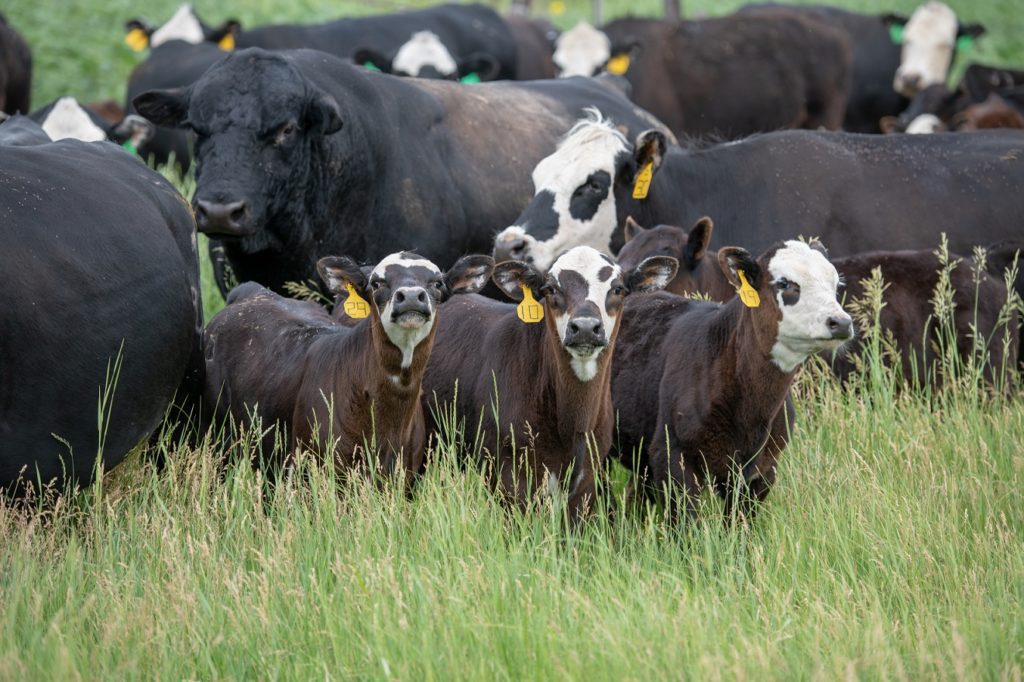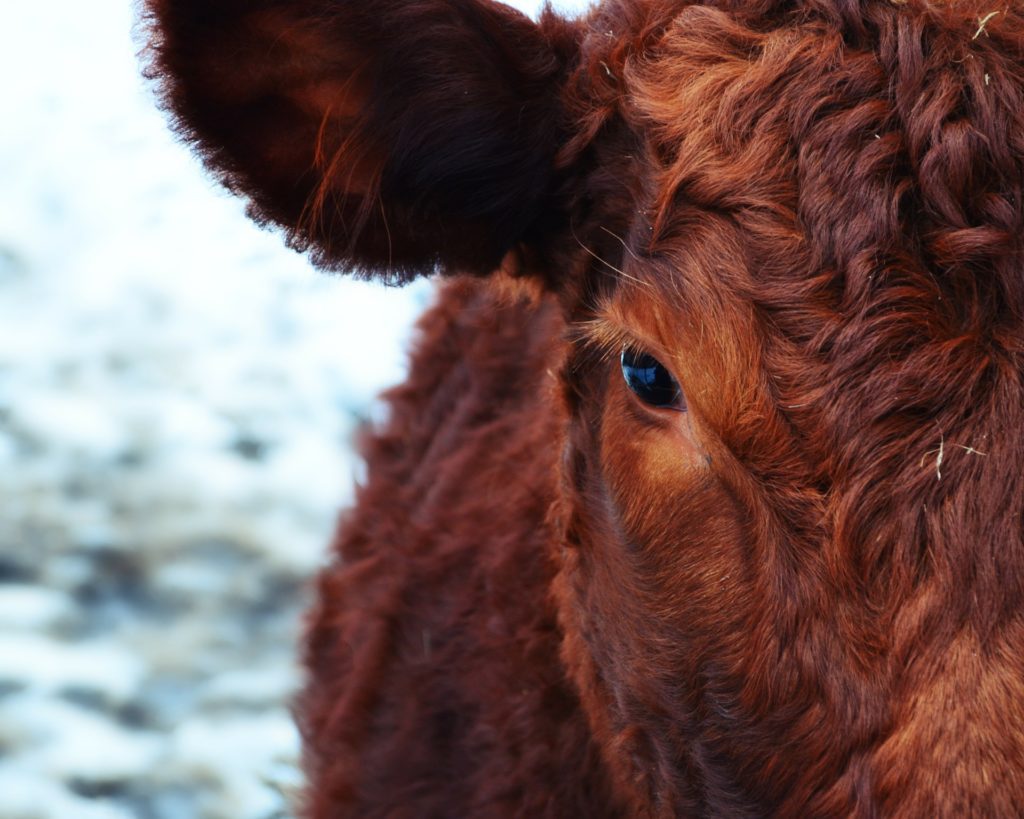Livestock Risk Protection (LRP) insurance is an important tool in the toolbox for livestock producers to use in managing national market price risk
This article was first published in “Nebraska Cattleman” magazine’s February 2022 issue.
Several enhancements and improvements to the Livestock Risk Protection (LRP) insurance program over the last couple of years have made it much more user-friendly for cow-calf producers to purchase price protection for the fall calf crop earlier in the year. These changes include:
- Creating a new unborn feeder cattle type to allow for yet-to-be-born calves to be insured.
- Increasing the premium subsidy rates to a minimum of 35%. (See Table 1.)
- Moving the premium due date to the end of the coverage endorsement period.
- Expanding the sales window to include 60 days before the end of the endorsement period.
Previously, the premium was due at the beginning of the endorsement period and regulations required the calves to be born and alive at the time the specific coverage endorsement was entered into and for ownership to be maintained until 30 days from the end of the endorsement period for the insurance to remain in force.
A check of the RMA website (https://public.rma.usda.gov/livestockreports/main.aspx) shows coverage available on January 3rd for unborn steers & heifers for endorsement lengths from 13 weeks up to 43 weeks, with end dates ranging from April 4 to October 31, 2022. RMA assumes a 50/50 mix of steers and heifers. Therefore, the price coverage for unborn steers & heifers is an average of the price coverage available for steers weight 1 and heifers weight 1. The coverage rates, reflecting how expensive the insurance is per dollar value insured, are the same for all three classifications.
| Coverage Level | Subsidy | |
|---|---|---|
| 95-100% | 35% | |
| 90-95% | 40% | |
| 85-90% | 45% | |
| 80-85% | 50% | |
| 70-80% | 55% |
Note: New and beginning producers qualify for an additional 10% subsidy.
On January 3rd, LRP insurance coverage for feeder cattle was available for an endorsement length of 43-weeks with an end date of October 31, 2022. The expected ending value for Unborn Steers & Heifers on that end date was $191.295 per cwt. (See Table 2.) This reflected the average of the expected ending value for Steers Weight 1 (< 600 pounds) and Heifers Weight 1 on the same date. Insured at the highest coverage level of 0.9897, the coverage price for Unborn Steers & Heifers was $189.33. The unsubsidized coverage rate of 0.053641 resulted in a total premium of $10.156 per cwt. With a 35 percent subsidy, this would be reduced by $3.56 to a producer premium of $6.60 per cwt.
Table 2 shows coverage associated with the highest coverage price available at the 35, 40, and 45 percent premium subsidy levels, respectively. In 2021, the actual ending value was approximately $10 per cwt. above the expected ending value so all of the coverage levels resulted in a net result of the producer paying the premium at the end of the coverage period. We also estimated how this coverage would have worked in 2020 under the current subsidy levels. In 2020, the actual ending value was almost $19 per cwt. (or 11.5 percent) below the expected ending value. Therefore, all of the sample coverage levels are effectively at their floor price. Each paid enough indemnity to cover all of the premium with the two higher coverage levels resulting a net payout to the producer of $12.75 and $6.98 per cwt., respectively.
It is important to note, LRP coverage is based on the Chicago Mercantile Exchange (CME) Feeder Cattle contract. Each individual producer still receives value from their calves in their local market transactions. In Nebraska, we typically see a positive basis between local feeder cattle prices and the CME Feeder Cattle contract price. Producers still experience this positive effect and add it to their bottom line. LRP insurance does not help control basis risk. LRP is a tool that only helps mitigate potential variation in the national output price.
For example, in Table 2, the national market price varied from $143.54 to $164.08 from 2020 to 2021. LRP insurance mitigated this variation to a price variance from $156.29 to $157.46 at the highest coverage level available. For a producer with a $12 basis in the local market, this changes the range of income received per hundredweight of calf produced from $155.54 to $176.08 to a much more stable range of $168.29 to $169.46. By giving up approximately $6 to the upside, the producer is able to mitigate a lot of potential downside.
| Crop Year | Exp. End Value | Coverage Level | Coverage Price | Premium Subsidy | Producer Premium | Actual End Value | Floor Value w/ LRP | Net Result | Final Effective Price w/ LRP |
|---|---|---|---|---|---|---|---|---|---|
| 2022 | 191.295 | 0.9897 | 189.33 | 3.56 | 6.60 | TBD | 182.73 | TBD | TBD |
| 2022 | 191.295 | 0.9458 | 180.93 | 2.55 | 3.81 | TBD | 177.12 | TBD | TBD |
| 2022 | 191.295 | 0.8909 | 170.43 | 1.54 | 1.88 | TBD | 168.55 | TBD | TBD |
| 2021 | 154.092 | 0.9996 | 154.04 | 3.55 | 6.62 | 164.08 | 147.42 | -$6.62 | $157.46 |
| 2021 | 154.092 | 0.9451 | 145.64 | 2.37 | 3.55 | 164.08 | 142.09 | -$3.55 | $160.53 |
| 2021 | 154.092 | 0.8906 | 137.24 | 1.34 | 1.65 | 164.08 | 135.59 | -$1.65 | $162.43 |
| 2020 | 162.278 | 0.9964 | 161.70 | 2.91 | 5.41 | 143.54 | 156.29 | $12.75 | $156.29 |
| 2020 | 162.278 | 0.9447 | 153.30 | 1.85 | 2.78 | 143.54 | 150.52 | $6.98 | $150.52 |
| 2020 | 162.278 | 0.8929 | 144.90 | 1.06 | 1.30 | 143.54 | 143.60 | $0.06 | $143.60 |
Source: https://public.rma.usda.gov/livestockreports/main.aspx
LRP insurance is an important tool in the toolbox for livestock producers to use in managing national market price risk. In a marketing year with high price expectations like 2022, strategies for using LRP can vary. Some will be willing to spend the $6.60 per cwt. to set the highest floor price possible. Others may be comfortable with a lower floor price and invest at a lower premium expecting prices to hold steady or climb higher. With the recent changes to LRP, producers can now put this coverage in place for their fall calf crop sooner than they ever could before with larger premium subsidies making it more affordable and with more flexibility at the end of the contract than in previous years.
For more information on LRP insurance contact your local livestock insurance agent or visit https://www.rma.usda.gov/Policy-and-Procedure/Insurance-Plans/Livestock-Insurance-Plans.
This material is based upon work supported by USDA/NIFA under Award Number 2018-70027-28586.
Interviews with the authors of BeefWatch newsletter articles become available throughout the month of publication and are accessible at https://go.unl.edu/podcast.
SOURCE: UNL BEEF
Jay Parsons, Farm and Ranch Management SpecialistElliott Dennis, Livestock Marketing and Risk Management Economist
PHOTO CREDIT: Troy Walz









